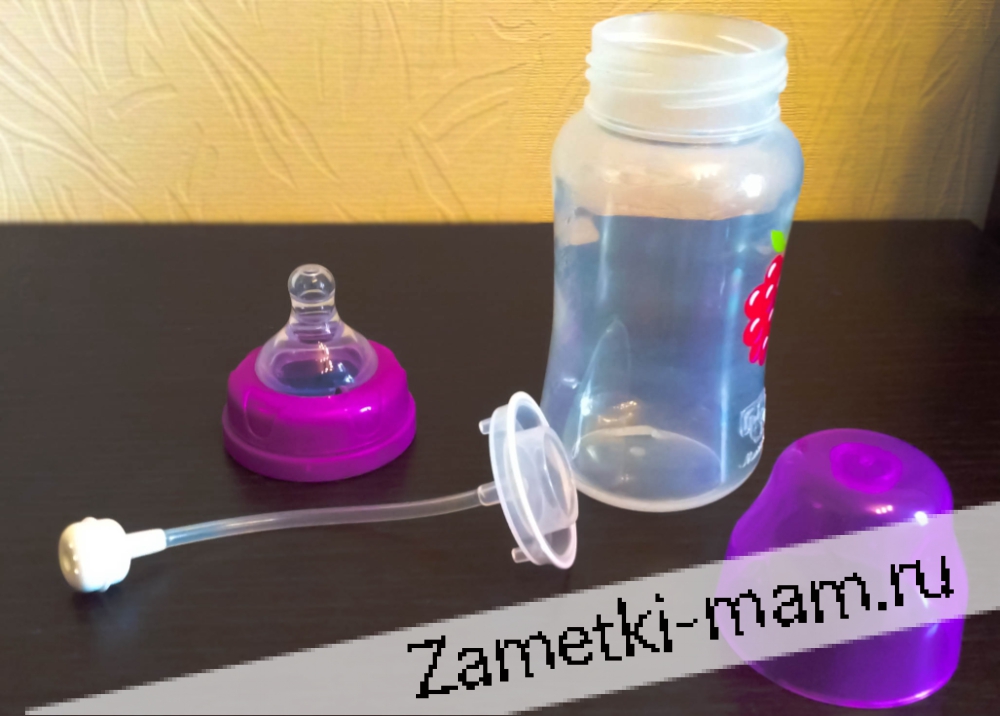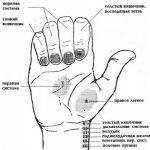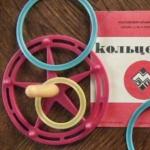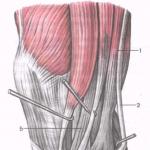Gazika in the belly of a baby. Infant colic: concept, reasons, how to help
Such common problems as colic and gaziki in newborn babies cause a lot of trouble for young parents. Moms and dads do not know how to help their baby, who suffers from intense pain and cries very loudly for a long time.
Nevertheless, there are many ways to relieve the crumbs of suffering and greatly alleviate his condition. In this article, we will tell you how colic differs from gazikov in newborns, and what treatment is best for having these unpleasant problems.
Colic and gaziki - what is it?The word "gaziki" doctors and young mothers understand the accumulation of gases in the tiny intestine, which is accompanied by discomfort and bloating. As a rule, in this situation, a small child experiences discomfort, as a result of which he may grunt, fart, push his legs to his stomach, and so on. Meanwhile, gaziki almost never bring serious suffering to a kid, so they are rarely accompanied by crying and crying.
Intestinal colic, on the other hand, causes an incredibly intense, sharp pain in the abdomen of a baby, therefore, with them, he cries loudly and tears for a long time. Although these two problems may not be related to each other, in most cases, colic is caused by gaziki, which inflate the tender intestines of the newborn. That is why to alleviate the suffering of the child with intestinal colic should, first of all, save him from the manifestations of flatulence.
How long do babies have colic and gas?
Most young parents, fearing such a serious problem, are interested in when colic and gas are present in newborns, and how long they can disturb a crumb. Most often flatulence and intense abdominal pains occur for the first time in infants about 2-3 weeks of age, and the most severe attacks become by 1.5-2 months of infants.
After 3-4 months, when the digestive system of the newborn is fully adapted to the new conditions and food offered, the symptoms of malaise usually begin to recede, however, all this is very relative. So, some young parents encounter intestinal colic in their son or daughter only after he is 1.5 or 2 months old, and by the end of the first half of the baby’s life they become a real problem. Especially often this situation is observed in premature babies.
How to save a newborn from colic and gas?
All young parents, watching the sufferings of their baby during colic and gazik, try to help him by any means. Meanwhile, not all moms and dads know what popular and traditional methods for this exist. Consider what can be given to a newborn from colic and gas to alleviate his condition and significantly reduce the intensity of pain:
- One of the most popular and effective means - dill water, which can be done independently or purchased at a pharmacy. You can give it to kids at any age after reaching 2 weeks, approximately 1 tablespoon from 3 to 6 times a day.
- Another effective pharmacy remedy for colic and gas bottles for newborns is a mixture made from vegetable oils of dill, mint and anise. Before use, this drug is diluted with boiled water to a special mark on the bottle. The prepared liquid in 10 drops drips before each feeding in the baby's mouth or added to the bottle with the mixture.
- Simethicone-based preparations are suitable for treating and relieving colic and gas in newborns. Among them, the most popular are Espumizan, Bobotik and All these tools are available in the form of drops or suspensions, which can be added to food or given to the crumbs separately.
According to Rome Criteria III (Diagnostic Criteria for Functional Gastrointestinal Disorders, published in April 2006), infant colic refers to “episodes of increased irritability, anxiety or crying in a child from birth to 4 months of age, occurring and ending without obvious reasons, which last 3 hours a day and more than at least 3 days a week, for at least one week; however, the problems of growth and development of the child should be absent. " Moreover, for the diagnosis of infant colic should be identified everything the above symptoms.
Usually, colic debut occurs at 2-3 weeks of life, they reach their climax in the second month and gradually disappear after 3-4 months. The most typical time for infant colic is evening hours. The child begins to cry sharply for no apparent reason (more often during or shortly after feeding), his face reddens, he screams, worries, knocks his legs, presses them to his stomach, because there are difficulties with the discharge of gas and stool. At the same time, the baby’s belly is swollen and tense, infrequent regurgitation is possible. After the discharge of gas and / or defecation comes a noticeable relief, the pain on palpation of the abdomen is absent.
Causes of Infant Colic
The frequency of infant colic on natural and artificial feeding practically does not differ and is, according to various sources, from 20% to 70%. The cause of this phenomenon is still not entirely clear, despite its long study. Among the main reasons are the following:
- the immaturity of the autonomic nervous system (it is the ANS that controls and regulates the work of all internal organs, including it is responsible for the digestion processes - it sends appropriate signals to the gastrointestinal tract (hereinafter - GIT)), respectively, if the signals are still poorly adjusted, then the digestion process violated);
- late start of the enzymatic system of the digestive tract organs (enzymes act as catalysts in almost all biochemical reactions occurring in living organisms, including they contribute to the absorption of food by the body. If the enzymatic system of the digestive tract organs fails, the food is not digested, causes fermentation, and consequence, increases gas formation);
- lack of hydrochloric acid (the role of hydrochloric acid for the body is difficult to overestimate. It participates in milk fixation, stimulates the motor activity of the stomach, as well as the formation of certain hormones and the secretion of certain enzymes, causes swelling of proteins (which promotes their breakdown by enzymes), etc. d)
- intestinal dysbiosis (the baby is born with a sterile intestine, respectively, so that the intestine is colonized takes time, and the process of reproduction of bacteria is very often accompanied by increased gas production);
- impaired intestinal motor function (the peristaltic wave (contractions of the intestinal walls, due to which the movement of its contents occurs) does not cover the entire intestinal tube, but only some of its sections, and therefore there is a sharp spasm of the intestine in certain parts of the small intestine and, consequently, pain form of colic);
- nutrition of the nursing mother and / or the presence of gastrointestinal diseases (breast milk is formed from blood components, respectively, the mother's nutrition affects the composition of milk to the same extent as the composition of blood, and if toxins enter the blood, they can get into the milk , which leads to irritation of the intestines of the child (more about the diet of a nursing mother and its effect on gas formation in the baby -));
- wrong mix;
- allergic and pseudo-allergic reactions;
- transition from natural feeding to artificial or transition to a new mixture;
- violation of feeding techniques (improper nipple trapping, swallowing air, overfeeding);
- overheating (the child sweats and loses moisture, intestinal juices become thicker, respectively, and the gastrointestinal tract becomes worse);
- congenital anomalies of development (cleft palate, cleft lip, tracheoesophageal fistula).
If all of the above are combined and slightly simplified, then the main role in the development of colic syndrome is played by increased gas formation (which contributes to the swelling of the small intestine section), an impaired intestinal motility, local spasms. It is noteworthy that in premature and low-weight children compared with large and term infants, infant colic is usually more pronounced and more prolonged.
How to help the baby with colic: theory
Based on the above causes of infant colic, the following recommendations have been developed to alleviate the child’s condition:

The most "ancient" carminative means fennel or dill. Especially for kids, it comes in the form of granulated tea or some dill water. It is believed that fennel oil has a weak carminative and antispasmodic effects, which as a result provides relief from an attack of colic in a child.
However, it should be noted that the abuse of fennel-based products can lead to indigestion and allergic reactions. It is also impossible to exclude individual intolerance, which can be expressed, including, in the form of nausea and vomiting.
Fennel essential oil is a part of such preparations as Plantex, Bebikalm, Happy Baby. However, it must be remembered that lactose is included in Plantex, therefore it cannot be used for children with lactase deficiency. The composition of Bebikalm and Happy Baby, in addition to dill oil, also contains anise and mint oils, which can cause allergic reactions. In addition, oil droplets can be poorly absorbed by the immature baby's digestive tract.
Phytopreparations containing liquid tinctures of medicinal herbs, fennel, chamomile flowers, coriander, for example Bebinos, are also active substances used in infantile colic. When using such drugs, it should be remembered that they contain ethanol (ethyl alcohol), and this makes undesirable their long-term use in infants, despite the fact that the proportion of ethanol is small.
One of the safest and most effective ways to treat infantile colic is the use of defoamers. These include simethicone-based drugs (Espumizan, Sab Simplex, Bobotik, Simikol, Disflatil). Simethicone has the ability to destroy gas bubbles in the digestive tract. The gases released during this process are absorbed by the intestinal walls or excreted by peristalsis. The drugs themselves are displayed unchanged with feces. It is believed that simethicone is not absorbed in the gastrointestinal tract, is not addictive and can be used both during the onset of pain (as a rule, pain in this case disappears within a few minutes), and to prevent the development of colic at each feeding of the baby. However, it should be noted that almost all simethicone-based preparations contain excipients, including flavoring agents that can cause allergic reactions (for more information about carminatives, you can read).
The use of such drugs is justified in the presence of it is colic and increased gas formation, accompanied, as a rule, bloating and hardness of the abdomen. If the abdomen is soft, then the baby is most likely not worried about colic or flatulence, but the painful discharge of gas (which is the norm for any person in a small amount) associated with weak intestinal muscles - in this case, the heat on the tummy will be much more effective.
Some doctors also prescribe pro-and prebiotics and enzymes to babies. It is assumed that these drugs will help accelerate the maturation of the gastrointestinal tract of the toddler. However, it should be remembered that the microflora of even one child can change daily, not to mention the fact that it is radically different in different children. Accordingly, it is rather difficult to choose the bacteria that are suitable for a particular child, and an improperly chosen drug can have side effects and even slow down the maturation of the gastrointestinal tract.
There is also an opinion (mainly in the post-Soviet space) that cow’s milk and gas-forming products can be removed from the mother’s diet. However, this opinion is not scientifically confirmed, and due to the fact that dairy products are one of the main sources of calcium, as well as lacto-and bifidobacteria, as a rule, such an exception is not justified.
How to help the baby with colic: the experience of mom
Immediately make a reservation that we have breastfeeding, and as such, my baby had no colic. The abdomen was always soft, but a painful discharge of gases was the place to be. Simethicone-based drugs and dill water did not have any effect on the discharge of gases. As for enzymes, pro-prebiotics, Vika had a lot of side effects from them (constipation / diarrhea / blood in the stool). As a result, the following events helped us ease the situation:
1. Feeding every 2-3 hours (from beginning to beginning) during the day and no more than once every 3 hours - at night. During this time, the child had time to eat (usually the newborn hangs on the breast for 40 minutes), the milk had time to digest, and the formed gases had time to go out, not accumulating in the intestine and not irritating it.
However, it is worth noting that if feeding is carried out less frequently than once every 3 hours (during wakefulness), then, as a rule, the child becomes very hungry by this time. There are two problems: firstly, a hungry child begins to suck much faster, which contributes to the swallowing of air during sucking; secondly, due to increased hunger, the child may overeat, because the feeling of satiety does not come immediately.
2. Before each feeding, we helped our daughter to release accumulated gaziki, alternating the following poses:
- Laying on belly
- Laying on the back and doing the exercises "bike", "frog"
- Laying on his back and occasional liftings at an angle of 30 degrees (mom or dad sat on the bed, leaning his back on the pillow and slightly bending her knees, put the baby on top of the legs (for convenience, you can cover the legs with a blanket and put the baby in the recess between the legs) and started lowering-raising by 30 degrees-lowering again, with the same purpose you can put the toddler in the swing 0+ (if available)).
Attaching to the breast was carried out only after the intestine is cleared of air accumulated after the previous feeding.
3. Observance of the “duty” of the breast. As you know, the "front" milk contains a lot of lactose (milk sugar). In this regard, the consumption of large amounts of "front" milk and the lack of "back", can lead to increased gas formation. Accordingly, in order to reduce the fermentation process, it is necessary to ensure that the child receives not only “front” and “back” milk. To this end, breastfeeding counselors often recommend observing the “duty” of the breast. The essence of this method is that the child is given one breast, regardless of the number of attachments, for at least 3 hours in a row (in our case, when feeding two times, I gave 2 times one breast, 2 times the other; at night my daughter ate 3 hours, respectively, the chest changed every time). If the breast is full, then before starting feeding you can express a little “front” milk. However, it is worth remembering that lactose is food for the beneficial intestinal flora, and therefore getting the "front" milk is also very important. After the arrival of "mature" lactation (we had it at 6 weeks), it became much easier, because the chest had not poured so much.
 Photo 2
Photo 2
4. It helped to facilitate the state of wearing a daughter in a special way, in which the hand of mom (dad) was warming the tummy (Photo 2). By the way, wearing a “post” after a meal was useless for us, since Vika practically did not swallow the air.
To fall asleep, we adapted as follows: after feeding, I sat on the bed, leaning my back on the pillow, and took my daughter into my arms. Slightly shaking the baby, I gradually crawled down the pillow. As my crawling, my daughter came out accumulated gaziki. If she was in such a strong state of discomfort, and she began to scream, I again rose a bit to calm her, and then again slid along the pillow. As a result, she fell asleep perfectly to the beat of her heart, lying a tum on her mom's belly. After a while, she could slide onto her side and sleep just beside me. Of course, sleeping with a child on the stomach is not very comfortable, but after long months of pregnancy it was not so difficult (at least, it is better than not sleeping at all). In addition, this method of packing is available not only to mom, but also to dad, which means you can alternate.
5. On the recommendation of the pediatrician, I eliminated from the diet all the milk and gas-forming products (and generally sat on a hypoallergenic diet) for up to four and a half months of the child. However, the gaziki stopped bothering their daughter at 5 months (that is, 2 weeks after I began to fully eat, including, returned to the diet fermented milk products). Therefore, I believe that good nutrition and healthy digestion of mothers accelerate the process of maturation of the baby’s digestive tract better than any enzymes, pro-and prebiotics.
Based on the above, we can draw the following conclusion: colic (or just painful gaziki) is associated with the immaturity of a small organism and only time can completely cure them. The task of the mother is not to try to deceive the nature of attempts to speed up the process of organizing the work of the gastrointestinal tract (if this is not necessary), but to be near and alleviate the condition of the baby during this difficult period for him.
You may be interested in the following entries:
The baby is crying and he is tormented by pain, while mom and dad are in a panic trying to alleviate the condition of their children. What to do? How to help? First you need to find out the difference between colic and gazikov a newborn.
What is the difference between gases and colic?
Gases in a newborn are a common abdominal distension, but colic manifests itself in the form of acute periodic pain. Directly, they are interrelated.
If gases are prevented in time, the onset of colic can be avoided in most cases, or at least reduce their impact. The difference lies in the fact that one discomfort comes earlier and the other later. Regarding the sensations of the baby, the differences are insignificant, in any case, colic and gases will cause a lot of trouble.
How can a mom contribute to their appearance?
All that you have to eat in one way or another has the very first effect on the intestines. A nursing mother should, even before the appearance of the baby, understand for herself that her usual way of life will have to be changed. Much will have to give up.
Breast feeding requires you to follow certain rules in food. So that gaziki in newborns do not become a daily concern, a mother should eliminate a certain number of foods from the diet.
These include:
- Any carbonated drinks.
- Milk cow.
- Pastry and black bread.
- Sweets. Sugar is most conducive to fermentation in the intestines.
- All kinds of nuts.
- Fruits and vegetables, provoking gases. For example, apples, onions, garlic, beans, cabbage, cucumbers can increase gas formation.
- Chicken eggs.
- Mushrooms
Mom should gradually add products to the daily menu and monitor the reaction of the crumbs. If a rash or discomfort in the intestines does not occur, then she can safely eat them.
Regardless of breast milk, gases in a newborn can occur for other reasons.
What else affects the formation of gazikov?
There are a number of factors that parents pay the least attention to.
Overfeeding baby. Insatiable pussy trying to swallow as much milk as possible, and at the same time air gets into his tummy. In addition to gas, not strengthened digestive system can not overcome such a quantity of food. In everything it is necessary to keep the norm and in no case bring the baby to a hungry state.
Incorrectly captured chest. If the baby was attached to the breast, and he did not fully capture it, then through the resulting gap, air would flow into his stomach along with the milk.
Little movement. Minicars in newborns may occur due to accumulated air, which was formed as a result of weak activity. The child should more often spread on the tummy and be worn in different positions.
An important factor influencing the behavior of the crumbs, is the mood of his mother. Anxiety, excitement and psychological state can be transmitted from mother to newborn. You should control your emotions in order to avoid unnecessary unreasonable crying.
Before using modern drugs that promise to quickly and easily deal with babies in newborns, you need to heed the advice of the older generation. Indeed, grandparents and nobles did not know about universal pharmaceuticals. They received their experience and knowledge from their parents. So, a number of popular methods of combating gas formation in children can be attributed to the treasury of useful advice.

Folk remedies for gas, proven by more than one generation
Put the newborn on the tummy. This is the first that comes to any parent in the head. Laying out will help eliminate accumulated gases before feeding. But this method is like prevention. In the midst of crying and pain from colic, he will cause only another discomfort.
Heated diaper. If you apply heat to the tummy, then the spasms and gases will gradually begin to let go. Muscles will relax, and the baby will feel relieved and calm down. In addition to the diaper, my mother's hand is perfect. Another baby can be put on his stomach, thereby providing heat.
The position of the bar. After feeding, do not rush to lay the crumbs. It should be worn vertically. All the air that the baby had to swallow with food should go out. After the child has burped air it can be laid to sleep. It is better to devote a crumb to 10 minutes than the rest of the time to overcome the gaziki of a newborn.
Ride a bike. Of course, it is said conditionally. No one will plant a child, and ride a bike. But such movements with the legs will remove gases.
All these methods have been used more than a dozen times. But rely on 100% result is not worth it. Every kid is different. Gases in the newborn, though not a serious disease, but causes considerable discomfort and pain to the baby.
If the grandmother's tips do not help and the newborn continues to cry and are tormented, you should include a backup plan. How can medicine eliminate gaziki in newborns?
Pharmaceutical ways to deal with Gazikov
Drugs that can affect gases in a newborn are divided into 4 groups:
Easy carminative effects. The drug is based simethicone. This substance destroys the bubbles of gases and stops spasms. It is applied from the first day of life. Does not provoke addiction. Espumizan and Bobotik will perfectly cope with colic.
Bacteria. If the baby’s intestinal microflora is deficient in beneficial bacteria, the doctor will prescribe a drug containing them. Independently can not be used. Only after the results of the tests and the pediatrician's consultation can the application be started according to his recommendations. Usually, doctors prescribe Lactobacterin and Bifidumbacterin.
Enzyme drugs. For the assimilation of milk, the baby often lacks lactose. In this case, the enzyme is assigned lactase. The drug is used only with the permission of the doctor. The danger of admission is frequent use, because the baby's body must produce the necessary enzymes on its own. Lactase Baby and Enzyme Lactase will help the baby cope with the absorption of breast milk.
Herbal preparations. Chamomile, fennel, dill, anise and many other herbs can eliminate flatulence. Broths are safe for kids and can be used as a preventive measure. Well proven Plantex and Baby Calm.
![]()
Funds from gas
In addition to folk remedies and medication, enhanced measures can be applied to relieve colic pain.
These include:
- enema;
- vapor pipe.
Enema
The use of enema will not be difficult. A small amount of the solution (or lukewarm water) should be collected in the pear and injected into the baby. You can use ready microclysters, designed specifically for children from the first days of life, such as Microlax.
Vent tube
But with the use of the vapor tube you need to be careful. It should be smeared with petroleum jelly and gently injected to the specified mark. It remains only to wait for the passage of gas, and the tube can be removed.
When the reason for crying is clear, then you can begin to provide assistance for the child. Newborn babies are a rather unpleasant phenomenon, but parents can cope with them on their own. The main thing is not to panic and help your child in time.






